This gum tree painting was inspired by the gum trees growing next to the pine forest at Mt. Crawford in South Australia. The open, sunny, dry eucalyptus forest was such a contrast to the dark, damp pine forest.
You’d be hard pressed to go more than 10 minutes without spotting a eucalyptus tree in Australia. They dominate our landscapes from the bush to our backyards, paddocks, parks and pavements.
And they even have their own national day — on March 23.
You’d be hard pressed to go more than 10 minutes without spotting a eucalyptus tree in Australia.
They dominate our landscapes from the bush to our backyards, paddocks, parks and pavements.
And they even have their own national day — on March 23.
Eucalypts form about three quarters of the tree flora of Australia.
Eucalypts are widely distributed over the Australian continent. They range from the dwarfed and stunted forms called ‘mallees’ to the tall trees which grow in coastal and mountainous regions.
Eucalypts are typically native to Australia although a small number of species have been found in neighbouring countries. Contrary to popular belief the extensive plantations in North and South America, Europe, Africa, China and India are not native but were all grown with seeds from Australia.
The eucalypt belongs to the Myrtaceae family. The genus was named Eucalyptus by the Frenchman L’Heretier in 1788. The word came from the Greek eu ‘well’ and kalypto ‘I cover’ and refers to the cap that covers the flower buds until the buds mature and force the cap open.
The roots of the eucalypt go back to when Australia was part of the supercontinent Gondwana.
The oldest known examples of eucalypt fossils are 52 million-year-old flowers, fruits and leaves found in Patagonia.
Sequencing of the eucalypt genome from the rose gum (Eucalypt grandis) — a species found in coastal areas of New South Wales and Queensland — indicates the group goes back at least 109 million years.
At that time, flowering trees were starting to take off and dinosaurs roamed the land.
A diverse Australasian
Today, botanists have identified around 900 species of eucalypts divided into three different groups: Eucalyptus, which make up the bulk of the species; Corymbia, the bloodwood eucalypts mainly found in the north; and Angophora.
Eucalypts come in all shapes and sizes and dominate the landscape from alpine regions to the outback and edges of rainforests.
There’s the mighty mountain ash (Eucalyptus regnans), the world’s tallest flowering tree; the gnarly snow gum (Eucalyptus pauciflora); the multi-stemmed bull mallee (Eucalyptus behriana); the apple or cabbage ghost gum (Corymbia flavescens) found in northern Australia; and the twisted Sydney red gum (Angophora costata).
The only place they don’t really dominate is the very, very arid parts of Australia.
One of the most distinctive features of eucalypts is their bark.
Some trees have smooth bark — as the tree grows it sheds old layers from its trunk or branches. The new bark underneath is often brightly coloured that fades over time.
There are also half-barked trees that have thick bark around their trunk but smooth limbs.
Other trees are completely covered in rough bark. The old layer of bark stays attached to the tree and forms a thick protective layer against fire. Rough barks can be a bit trickier to identify because the texture can take different forms.
If the bark has long stringy bark, it might a stringybark, if it has tough, blackened furrowed bark it might be an ironbark, and if it has really short fibres it might be a box or a peppermint.
There are about 30 species in eastern Australia that can be classified as stringybarks, but the word gets used for similar species that are not closely related.
The Darwin stringybark (Eucalyptus tetradonta) used in Aboriginal bark paintings in the Northern Territory is one of these false stringybarks.
Indigenous people across Australia also use bark to make canoes and shields.
In New South Wales, Victoria and Queensland there are a number of protected scarred trees. As the name suggests these trees bear scars from where the bark was cut away and sometimes engraved.
A eucalypt’s leaves are packed with oil glands that produce the aromatic compounds that give us their distinctive scent.
Some smell very strongly eucalyptus-like, some smell really like peppermints, and the lemon-scented gum has a more lemony smell.
These compounds help protect the tree from attack by pests.
Oil glands make them unpalatable to insects, but then you get insects that adapt to eating those sorts of leaves.
Gumnuts are actually hard, woody capsules have a thick wall, which is not destroyed by heat. The capsules open up after fire to release the undamaged seeds.
Features such as oil-filled leaves and bark that can easily shed make eucalypts highly flammable.
This ability to stoke a fire is part of their survival strategy.
If a fire is hot but goes through fast it will do less damage than a really slow burning fire.
The fact that that helps fire go through fast was clearly a selective advantage to the species because then their seeds wouldn’t have been cooked.
Even if the tops of the trees are destroyed by fire, many species can re-sprout from buds under their bark or from a lignotuber at the base of the tree. But not all species can re-sprout.
Why are eucalyptus trees called ‘gums?’
In 1688 William Dampier noted that trees in north west Australia exuded a type of gum.
Aborigines used this gum to fasten barbs to the ends of spears and fishing sticks and to treat cuts and wounds.
The exudation from the bark which looks like a ‘gum’ is actually a tannin-like substance known as ‘kino’. Governor Arthur Philip is credited with being the first to call the eucalypt a ‘gum tree’ in 1788. Since then most Australians have called eucalypts ‘gum trees’.
The characteristic fresh fragrance of Australian eucalypt forests comes from the leaves releasing some of their eucalyptus oil.
All eucalypts have eucalyptus oil in their leaves. The quantity and type of eucalyptus oil varies from species to species.
Researchers examined the psychology of food cravings and found the use of counter-visualisation – in particular, imagining the scent of Eucalyptus Oil – was highly effective in curbing cravings.
Koalas and other animals eat from the eucalyptus plant in the wild.
Health benefits and uses of eucalyptus oil and leaves –
AUD$675
Size:
76w
x 101h
x 3.75d
cms
View in my room

Australian landscape painting by Maureen Finck.
Oil on stretched canvas.
Ready to hang.
Sold
Love this 1
This gum tree painting was inspired by the gum trees growing next to the pine forest at Mt. Crawford in South Australia. The open, sunny, dry eucalyptus forest was such a contrast to the dark, damp pine forest.
You’d be hard pressed to go more than 10 minutes without spotting a eucalyptus tree in Australia. They dominate our landscapes from the bush to our backyards, paddocks, parks and pavements.
And they even have their own national day — on March 23.
You’d be hard pressed to go more than 10 minutes without spotting a eucalyptus tree in Australia.
They dominate our landscapes from the bush to our backyards, paddocks, parks and pavements.
And they even have their own national day — on March 23.
Eucalypts form about three quarters of the tree flora of Australia.
Eucalypts are widely distributed over the Australian continent. They range from the dwarfed and stunted forms called ‘mallees’ to the tall trees which grow in coastal and mountainous regions.
Eucalypts are typically native to Australia although a small number of species have been found in neighbouring countries. Contrary to popular belief the extensive plantations in North and South America, Europe, Africa, China and India are not native but were all grown with seeds from Australia.
The eucalypt belongs to the Myrtaceae family. The genus was named Eucalyptus by the Frenchman L’Heretier in 1788. The word came from the Greek eu ‘well’ and kalypto ‘I cover’ and refers to the cap that covers the flower buds until the buds mature and force the cap open.
The roots of the eucalypt go back to when Australia was part of the supercontinent Gondwana.
The oldest known examples of eucalypt fossils are 52 million-year-old flowers, fruits and leaves found in Patagonia.
Sequencing of the eucalypt genome from the rose gum (Eucalypt grandis) — a species found in coastal areas of New South Wales and Queensland — indicates the group goes back at least 109 million years.
At that time, flowering trees were starting to take off and dinosaurs roamed the land.
A diverse Australasian
Today, botanists have identified around 900 species of eucalypts divided into three different groups: Eucalyptus, which make up the bulk of the species; Corymbia, the bloodwood eucalypts mainly found in the north; and Angophora.
Eucalypts come in all shapes and sizes and dominate the landscape from alpine regions to the outback and edges of rainforests.
There’s the mighty mountain ash (Eucalyptus regnans), the world’s tallest flowering tree; the gnarly snow gum (Eucalyptus pauciflora); the multi-stemmed bull mallee (Eucalyptus behriana); the apple or cabbage ghost gum (Corymbia flavescens) found in northern Australia; and the twisted Sydney red gum (Angophora costata).
The only place they don’t really dominate is the very, very arid parts of Australia.
One of the most distinctive features of eucalypts is their bark.
Some trees have smooth bark — as the tree grows it sheds old layers from its trunk or branches. The new bark underneath is often brightly coloured that fades over time.
There are also half-barked trees that have thick bark around their trunk but smooth limbs.
Other trees are completely covered in rough bark. The old layer of bark stays attached to the tree and forms a thick protective layer against fire. Rough barks can be a bit trickier to identify because the texture can take different forms.
If the bark has long stringy bark, it might a stringybark, if it has tough, blackened furrowed bark it might be an ironbark, and if it has really short fibres it might be a box or a peppermint.
There are about 30 species in eastern Australia that can be classified as stringybarks, but the word gets used for similar species that are not closely related.
The Darwin stringybark (Eucalyptus tetradonta) used in Aboriginal bark paintings in the Northern Territory is one of these false stringybarks.
Indigenous people across Australia also use bark to make canoes and shields.
In New South Wales, Victoria and Queensland there are a number of protected scarred trees. As the name suggests these trees bear scars from where the bark was cut away and sometimes engraved.
A eucalypt’s leaves are packed with oil glands that produce the aromatic compounds that give us their distinctive scent.
Some smell very strongly eucalyptus-like, some smell really like peppermints, and the lemon-scented gum has a more lemony smell.
These compounds help protect the tree from attack by pests.
Oil glands make them unpalatable to insects, but then you get insects that adapt to eating those sorts of leaves.
Gumnuts are actually hard, woody capsules have a thick wall, which is not destroyed by heat. The capsules open up after fire to release the undamaged seeds.
Features such as oil-filled leaves and bark that can easily shed make eucalypts highly flammable.
This ability to stoke a fire is part of their survival strategy.
If a fire is hot but goes through fast it will do less damage than a really slow burning fire.
The fact that that helps fire go through fast was clearly a selective advantage to the species because then their seeds wouldn’t have been cooked.
Even if the tops of the trees are destroyed by fire, many species can re-sprout from buds under their bark or from a lignotuber at the base of the tree. But not all species can re-sprout.
Why are eucalyptus trees called ‘gums?’
In 1688 William Dampier noted that trees in north west Australia exuded a type of gum.
Aborigines used this gum to fasten barbs to the ends of spears and fishing sticks and to treat cuts and wounds.
The exudation from the bark which looks like a ‘gum’ is actually a tannin-like substance known as ‘kino’. Governor Arthur Philip is credited with being the first to call the eucalypt a ‘gum tree’ in 1788. Since then most Australians have called eucalypts ‘gum trees’.
The characteristic fresh fragrance of Australian eucalypt forests comes from the leaves releasing some of their eucalyptus oil.
All eucalypts have eucalyptus oil in their leaves. The quantity and type of eucalyptus oil varies from species to species.
Researchers examined the psychology of food cravings and found the use of counter-visualisation – in particular, imagining the scent of Eucalyptus Oil – was highly effective in curbing cravings.
Koalas and other animals eat from the eucalyptus plant in the wild.
Health benefits and uses of eucalyptus oil and leaves –
 Sue’s Hydrangeas
Sue’s Hydrangeas
AUD$1,320
Size:
102w
x 76h
x 3.75d
cms
Maureen Finck
 Industrial Landscape
Industrial Landscape
AUD$650
Size:
46w
x 46h
x 3.75d
cms
Maureen Finck
 Night Descending Over The Garden
Night Descending Over The Garden
AUD$1,090
Size:
76w
x 76h
x 3.75d
cms
Maureen Finck
 Dried Flowers
Dried Flowers
AUD$1,420
Size:
76w
x 102h
x 3.75d
cms
Maureen Finck
 Magnolias
Magnolias
AUD$1,320
Size:
102w
x 76h
x 3.75d
cms
Maureen Finck
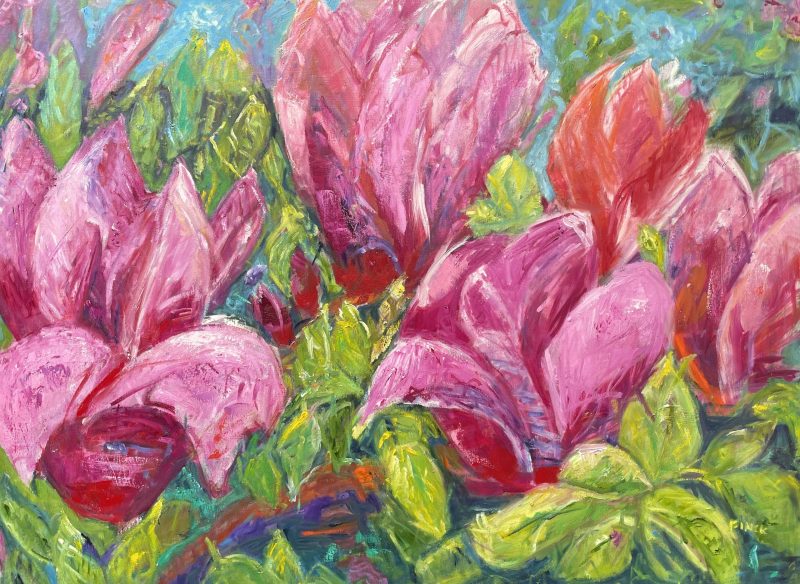 Magnolias On Audley Avenue
Magnolias On Audley Avenue
AUD$1,320
Size:
102w
x 76h
x 3.75d
cms
Maureen Finck
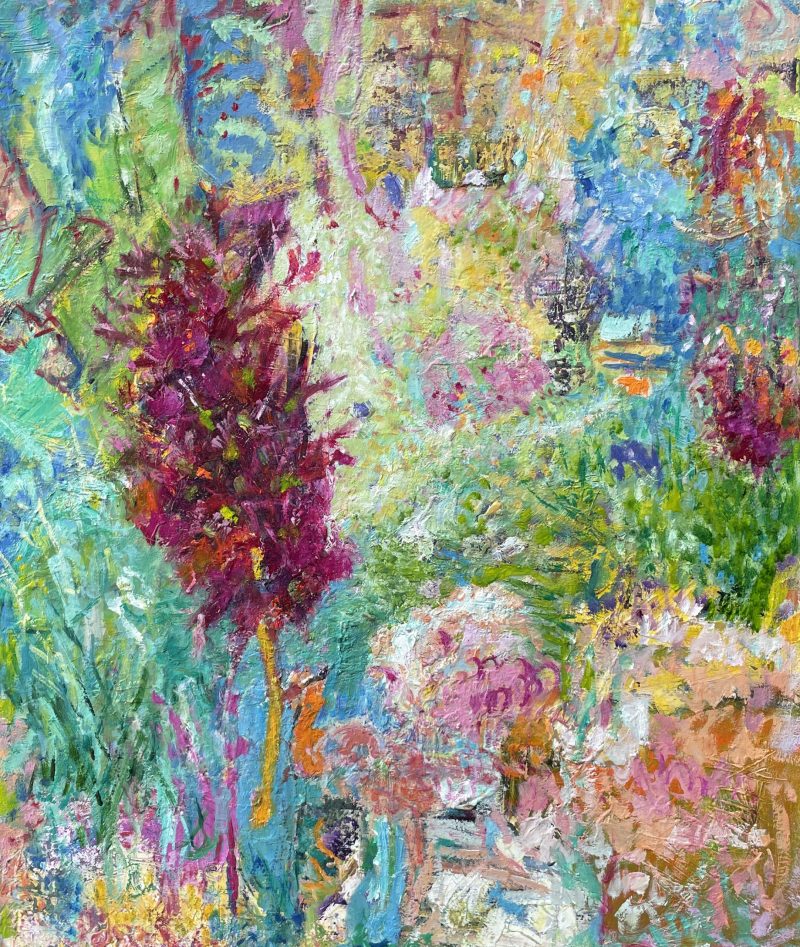 Bottlebrush
Bottlebrush
AUD$670
Size:
51w
x 61h
x 3.75d
cms
Maureen Finck
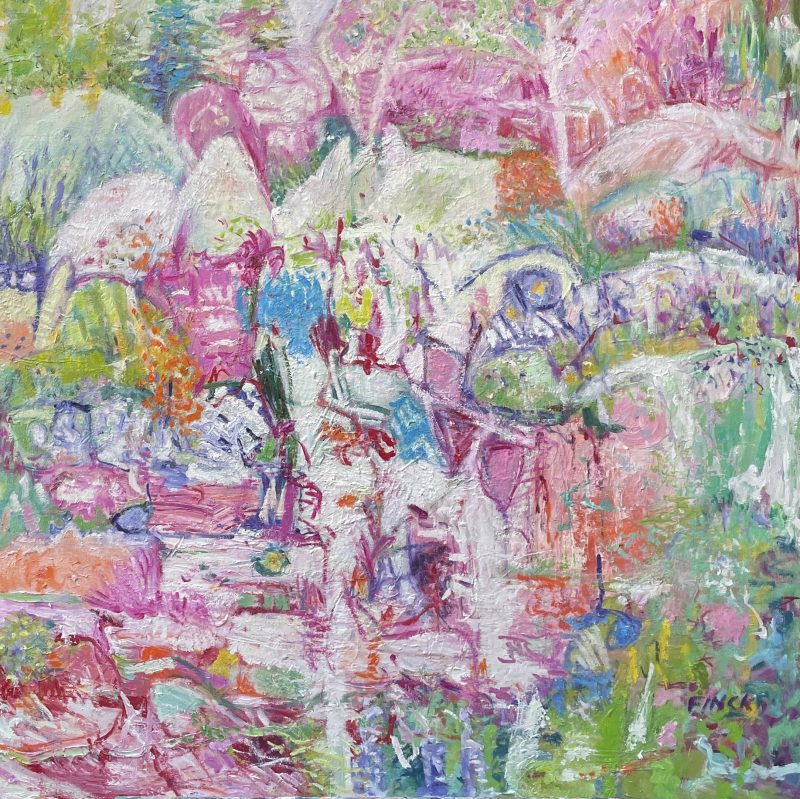 Originally Dried Flowers
Originally Dried Flowers
AUD$1,050
Size:
76w
x 76h
x 3.75d
cms
Maureen Finck
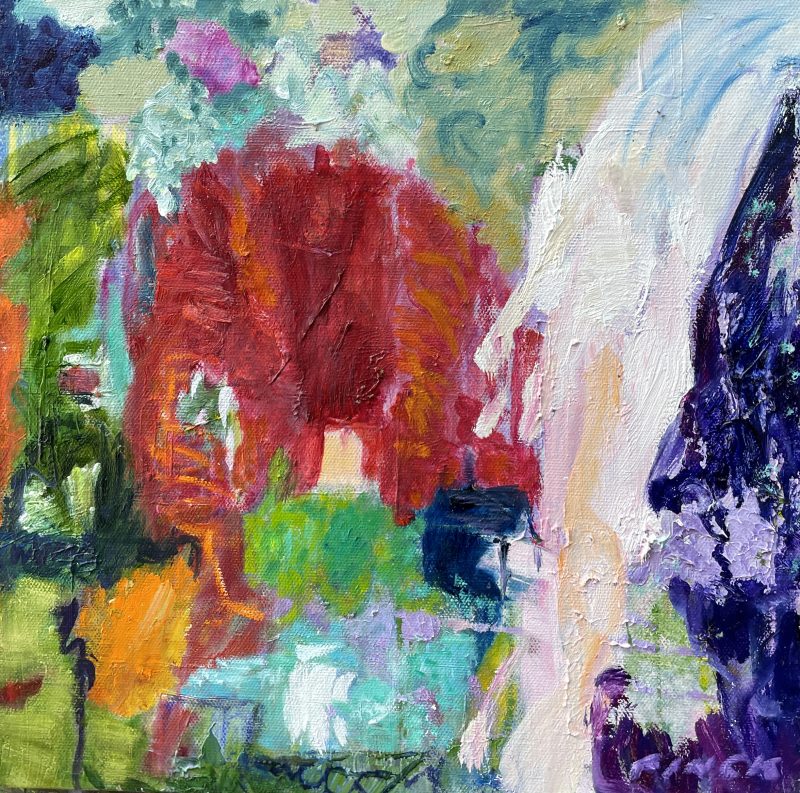 The Little Blue House
The Little Blue House
AUD$440
Size:
31w
x 31h
x 3.75d
cms
Maureen Finck
 Farewell
Farewell
AUD$1,490
Size:
153w
x 91h
x 3.75d
cms
Maureen Finck
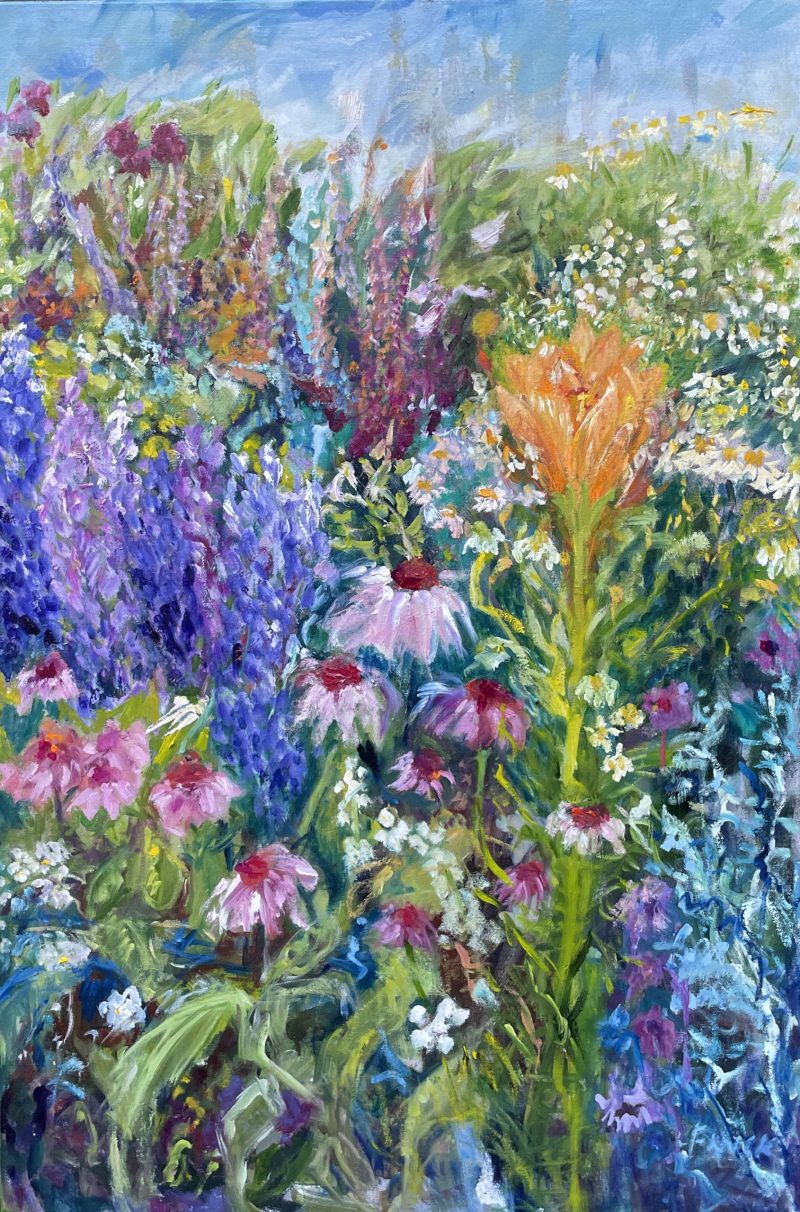 The Character Of Echinacea
The Character Of Echinacea
AUD$1,020
Size:
61w
x 91h
x 3.75d
cms
Maureen Finck
 My Imaginary World
My Imaginary World
AUD$450
Size:
41w
x 31h
x 3.75d
cms
Maureen Finck
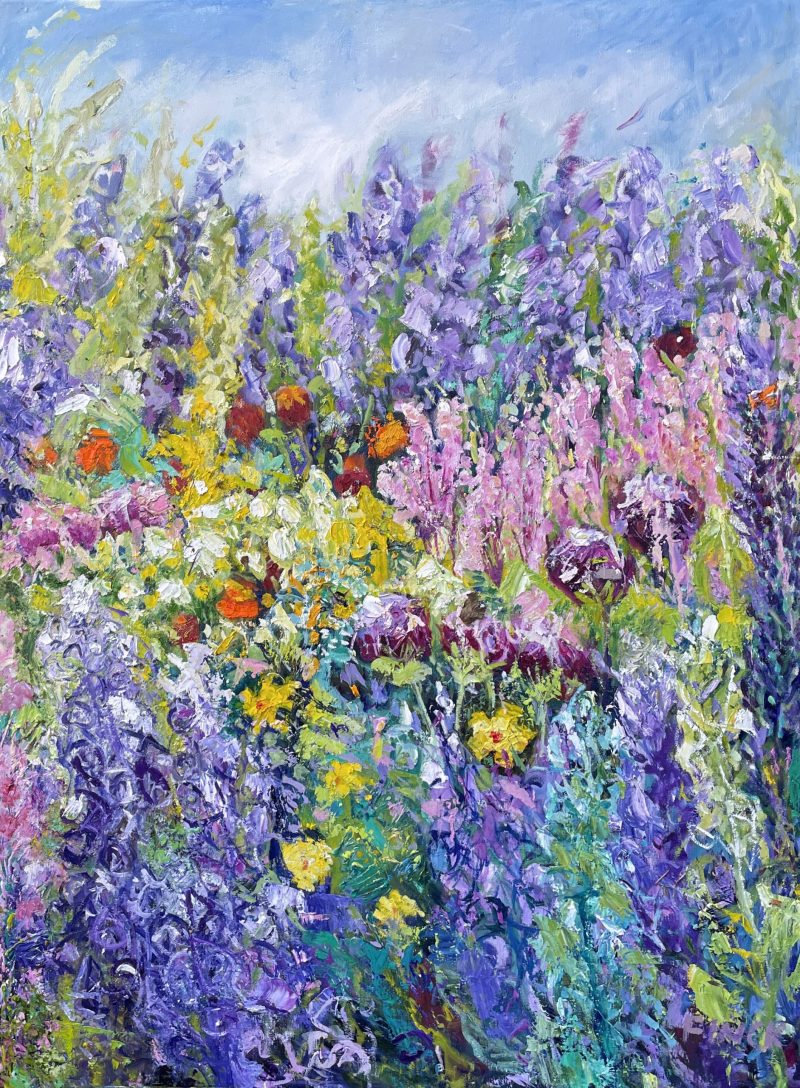 Foxglove, Lavender and Daisies
Foxglove, Lavender and Daisies
AUD$1,220
Size:
76w
x 102h
x 3.75d
cms
Maureen Finck
 Sit Down You’re Rocking The Boat
Sit Down You’re Rocking The Boat
AUD$700
Size:
51w
x 61h
x 3.75d
cms
Maureen Finck
 Flying Over The Earth
Flying Over The Earth
AUD$570
Size:
51w
x 41h
x 3.75d
cms
Maureen Finck
 White Rhododendrons
White Rhododendrons
AUD$890
Size:
51w
x 76h
x 3.75d
cms
Maureen Finck
 Daisies In The Garden
Daisies In The Garden
AUD$1,220
Size:
76w
x 102h
x 3.75d
cms
Maureen Finck
 I Need To Lie Down Under The Trees
I Need To Lie Down Under The Trees
AUD$450
Size:
41w
x 31h
x 3.75d
cms
Maureen Finck
 Cyclamen
Cyclamen
AUD$470
Size:
31w
x 41h
x 2.75d
cms
Maureen Finck
 Three Echinacea Flowers
Three Echinacea Flowers
AUD$1,220
Size:
76w
x 102h
x 3.75d
cms
Maureen Finck
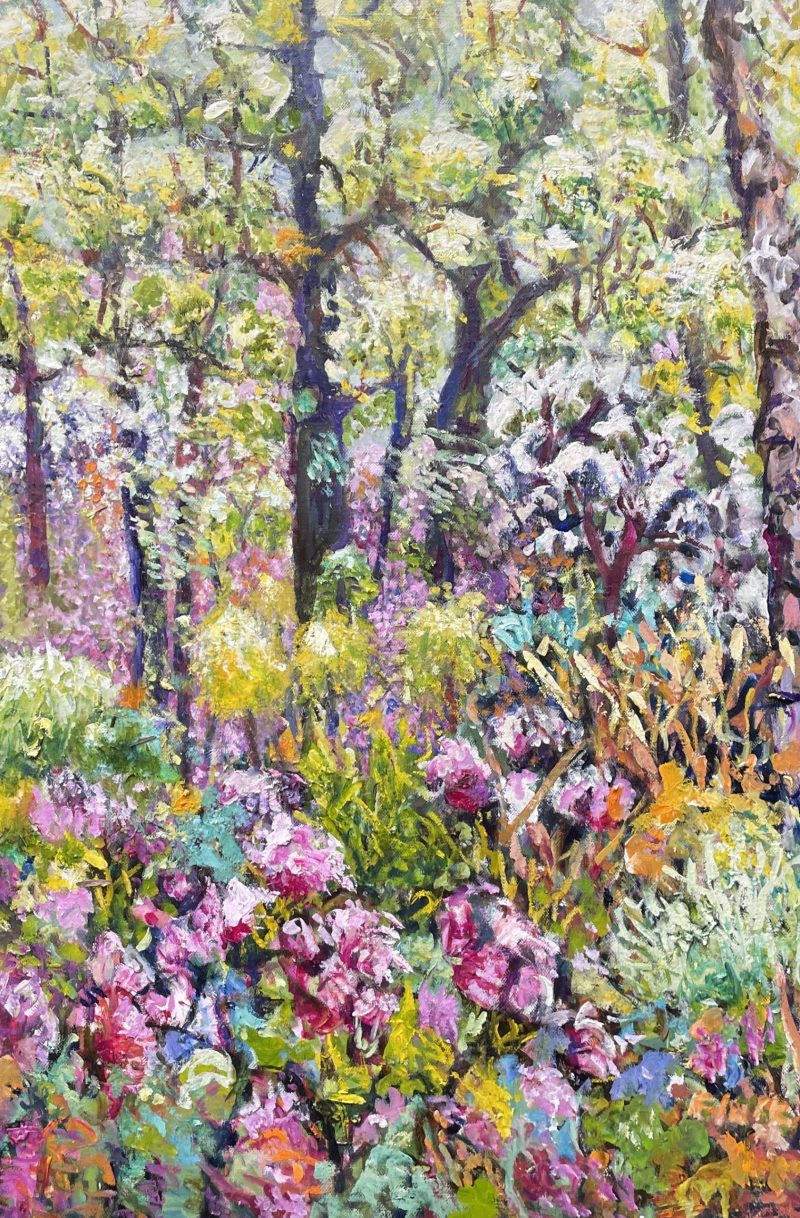 Mt. Lofty Rhododendrons
Mt. Lofty Rhododendrons
AUD$890
Size:
51w
x 76h
x 3.75d
cms
Maureen Finck
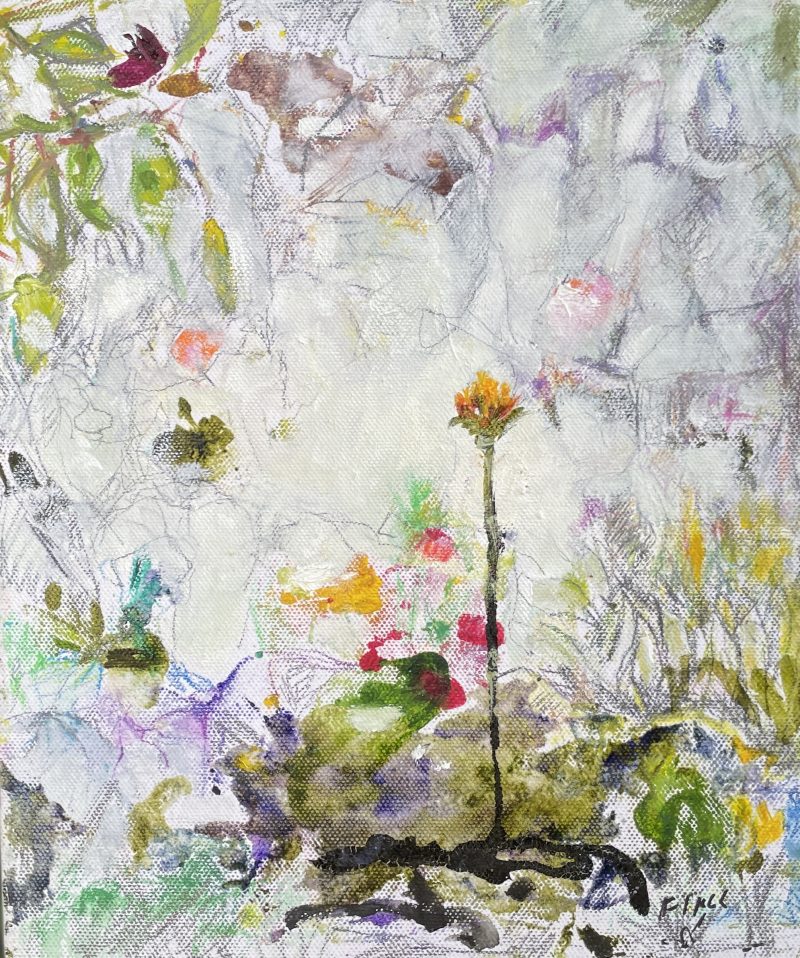 Gymea Lily
Gymea Lily
AUD$330
Size:
25w
x 30h
x 3.75d
cms
Maureen Finck
 Well, Well, Well
Well, Well, Well
AUD$700
Size:
51w
x 41h
x 3.75d
cms
Maureen Finck
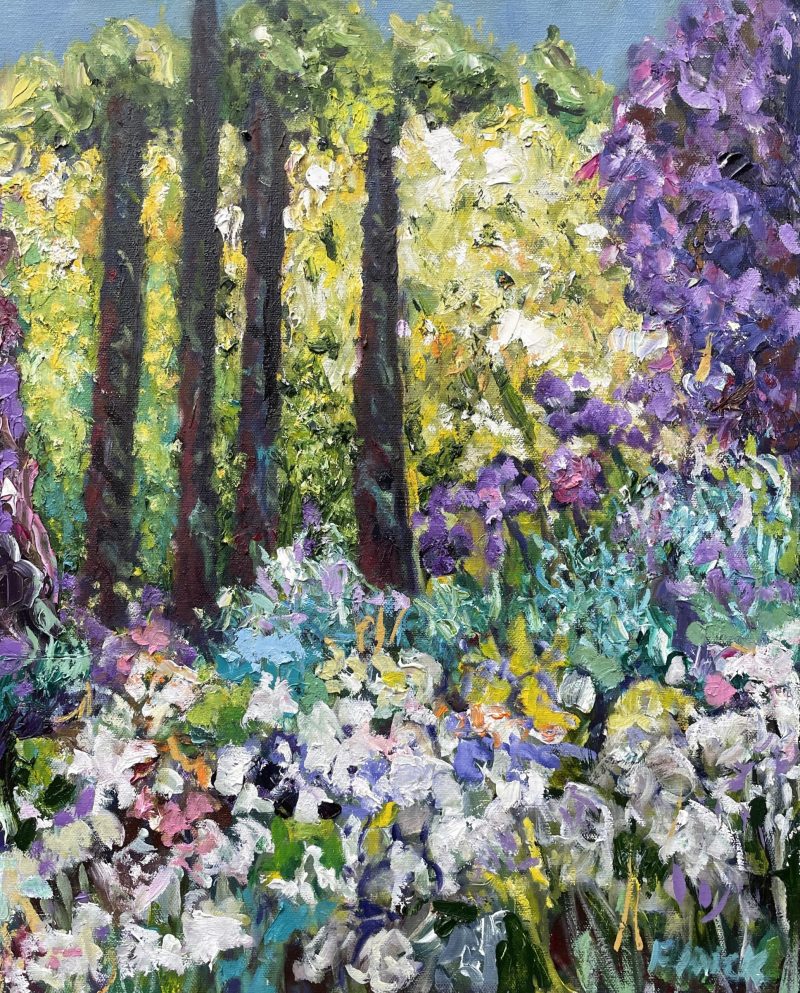 Pencil Pines and Agapanthas
Pencil Pines and Agapanthas
AUD$570
Size:
41w
x 51h
x 3.75d
cms
Maureen Finck
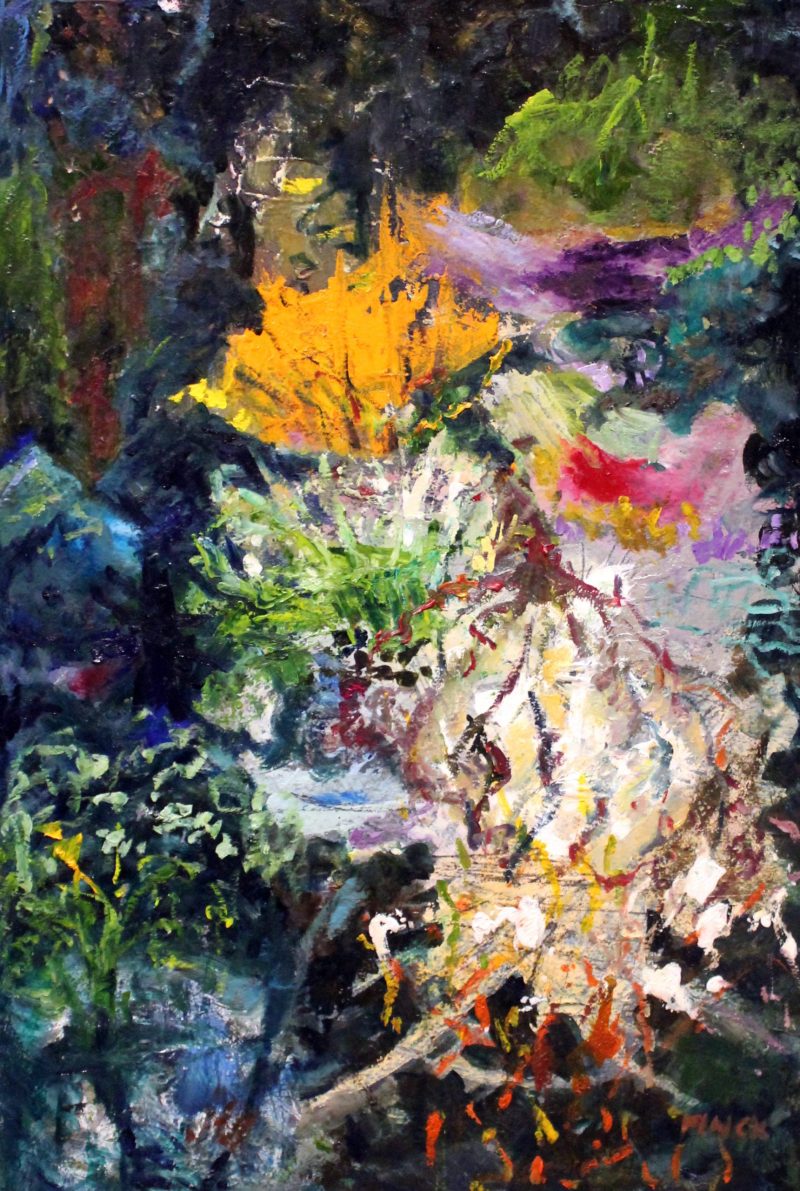 Water Lilies At Dusk
Water Lilies At Dusk
AUD$890
Size:
51w
x 78h
x 3.75d
cms
Maureen Finck
 Flowers On The Verge
Flowers On The Verge
AUD$1,200
Size:
102w
x 76h
x 3.75d
cms
Maureen Finck
 Camellia Path
Camellia Path
AUD$570
Size:
41w
x 51h
x 3.75d
cms
Maureen Finck
 Buddha Under The Bougainvillea Tree
Buddha Under The Bougainvillea Tree
AUD$1,220
Size:
102w
x 76h
x 3.75d
cms
Maureen Finck
 Cascading Flower Garden
Cascading Flower Garden
AUD$1,220
Size:
76w
x 102h
x 3.75d
cms
Maureen Finck
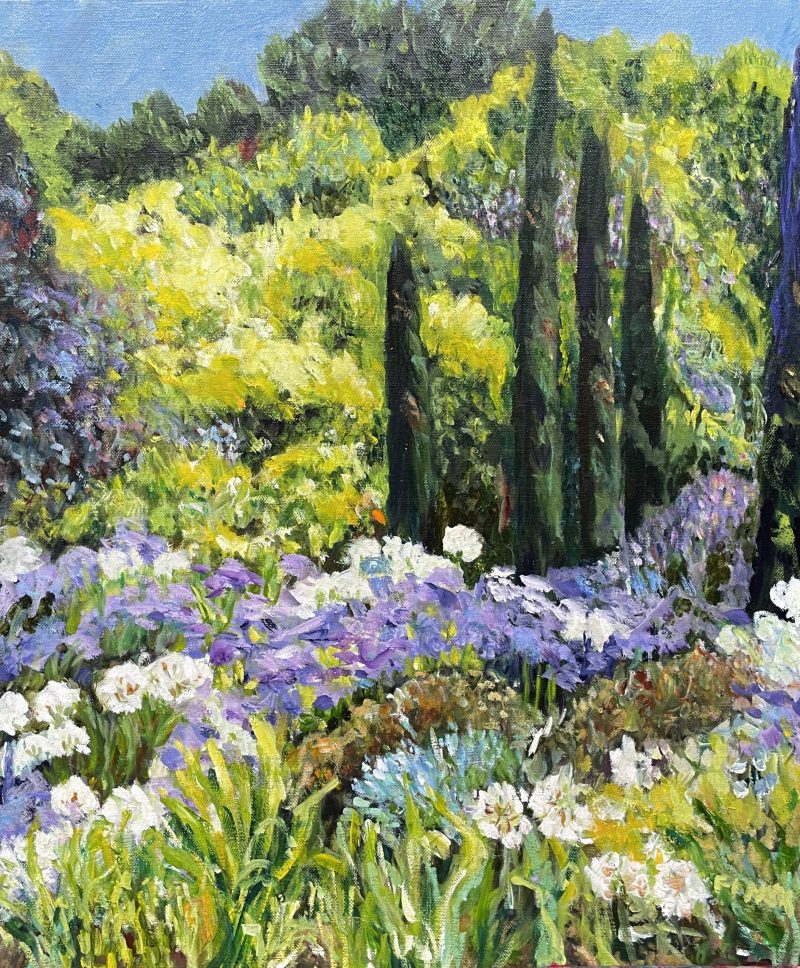 Agapanthas and Pencil Pines
Agapanthas and Pencil Pines
AUD$650
Size:
51w
x 62h
x 3.75d
cms
Maureen Finck
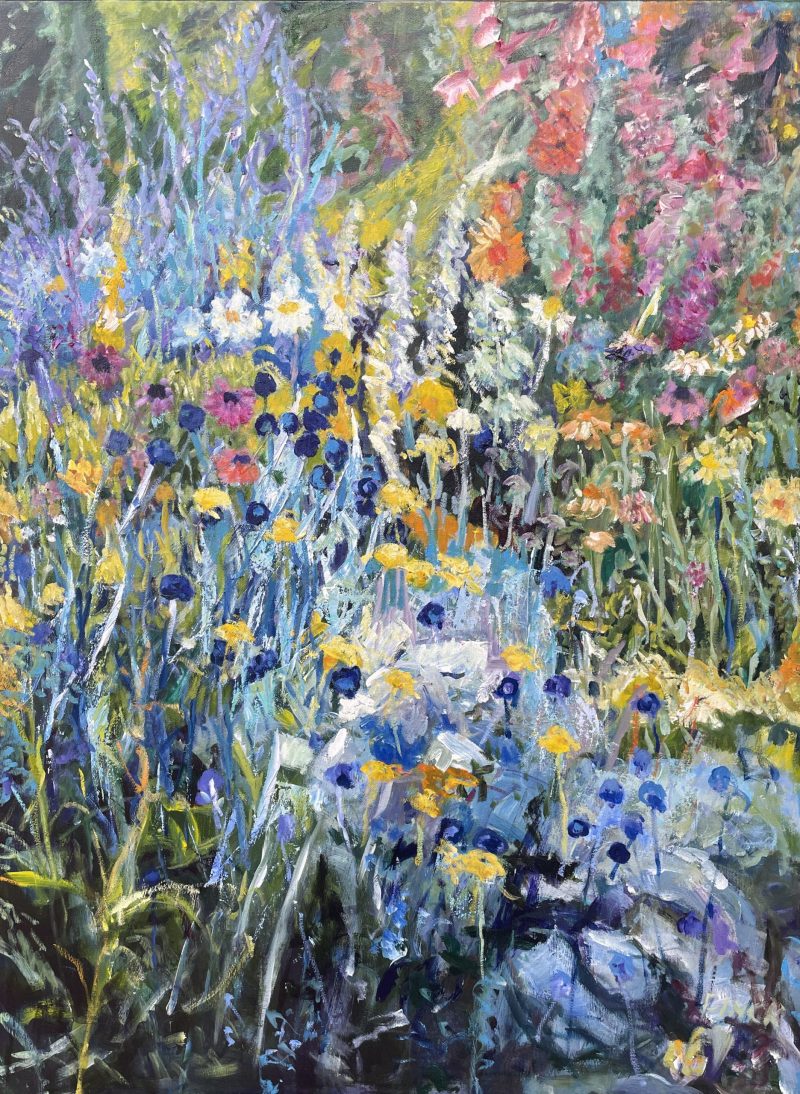 Garden of Echinacea, Daisies and Blue Buttons
Garden of Echinacea, Daisies and Blue Buttons
AUD$1,220
Size:
76w
x 102h
x 3.75d
cms
Maureen Finck
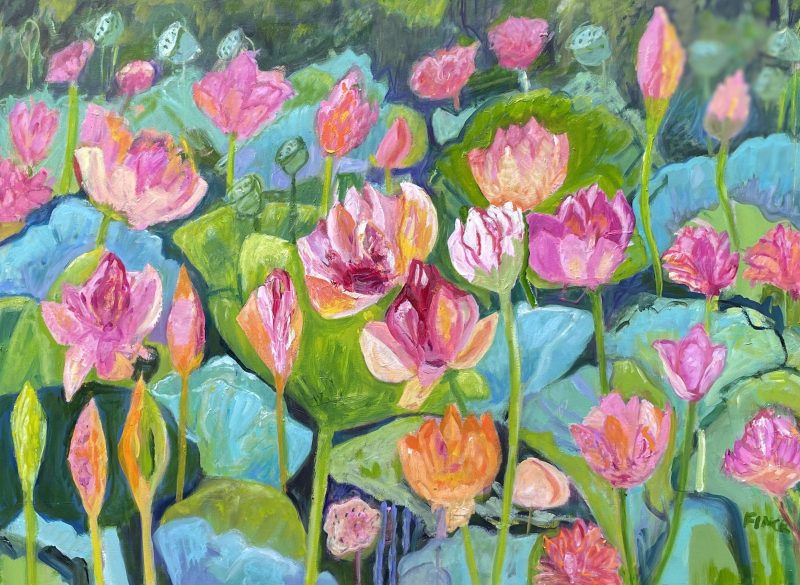 Water Lily Pond
Water Lily Pond
AUD$1,200
Size:
102w
x 76h
x 3.75d
cms
Maureen Finck
 Water Lily Impression
Water Lily Impression
AUD$990
Size:
76w
x 76h
x 3.75d
cms
Maureen Finck
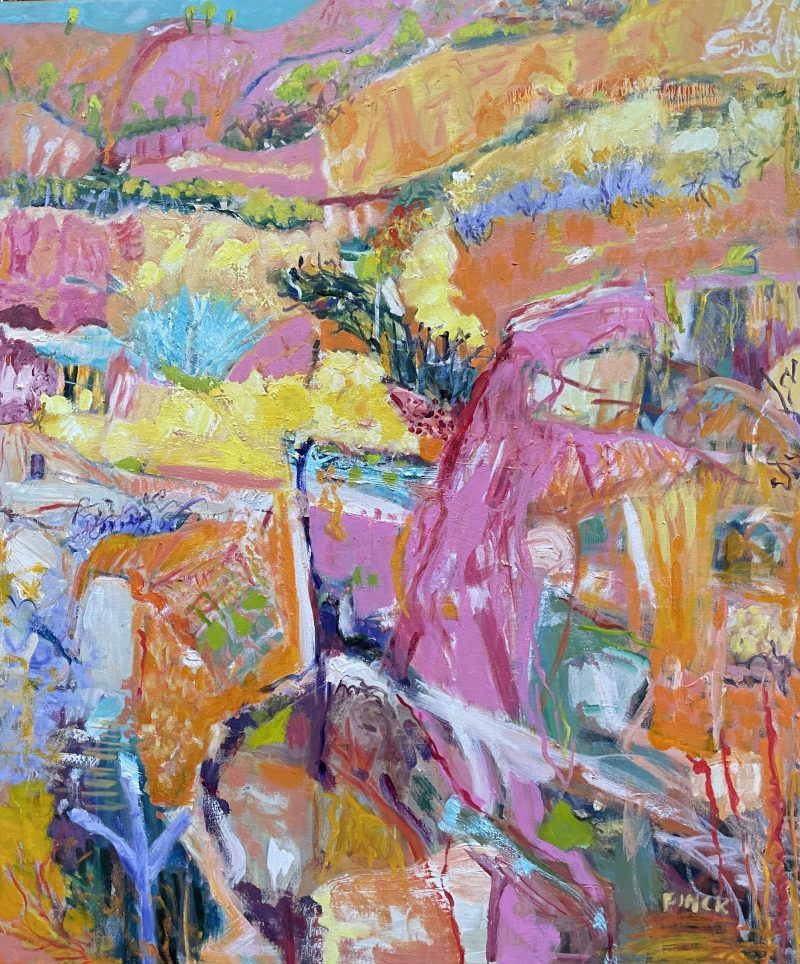 The Escarpment
The Escarpment
AUD$1,220
Size:
76w
x 102h
x 3.75d
cms
Maureen Finck
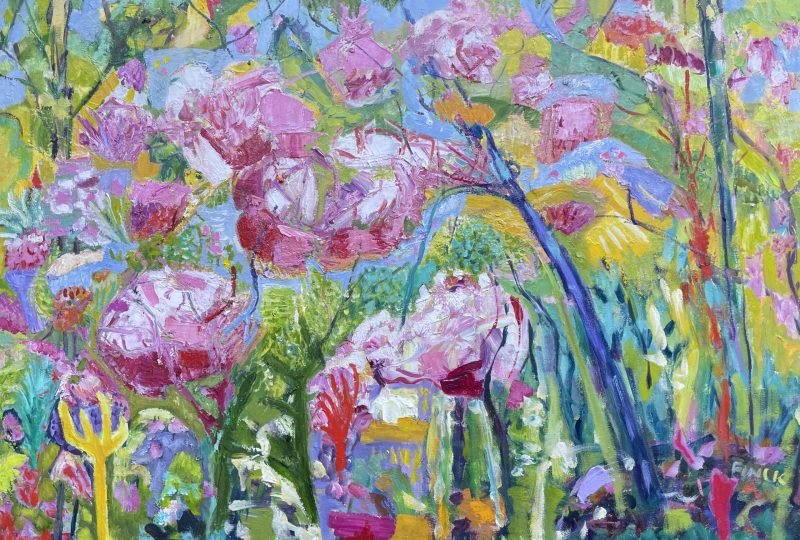 The Triffids
The Triffids
AUD$790
Size:
76w
x 51h
x 3.75d
cms
Maureen Finck
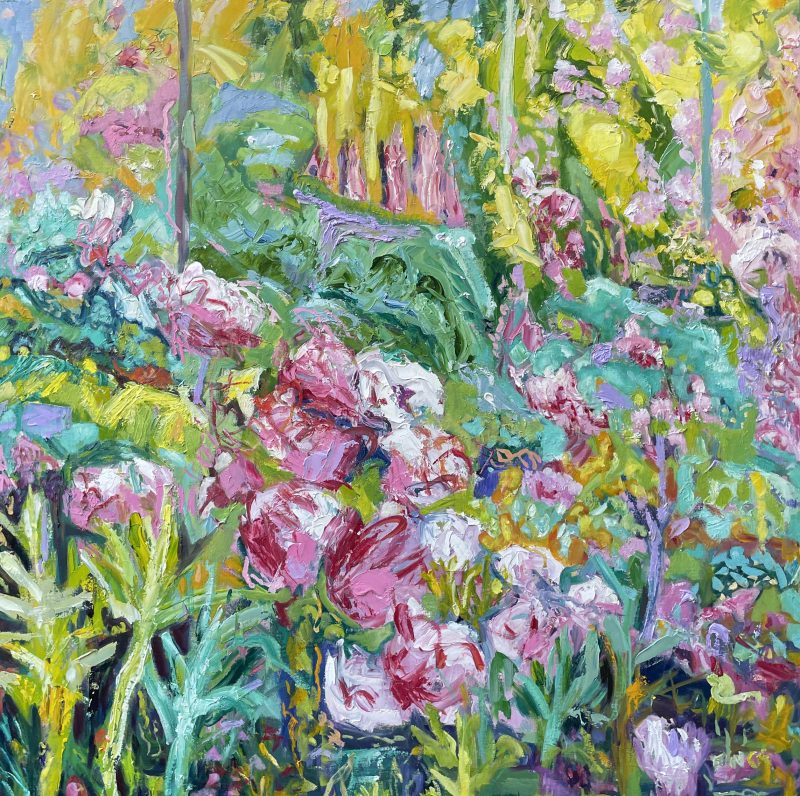 Tree Ferns And Rhododendrons
Tree Ferns And Rhododendrons
AUD$1,090
Size:
91w
x 91h
x 3.75d
cms
Maureen Finck
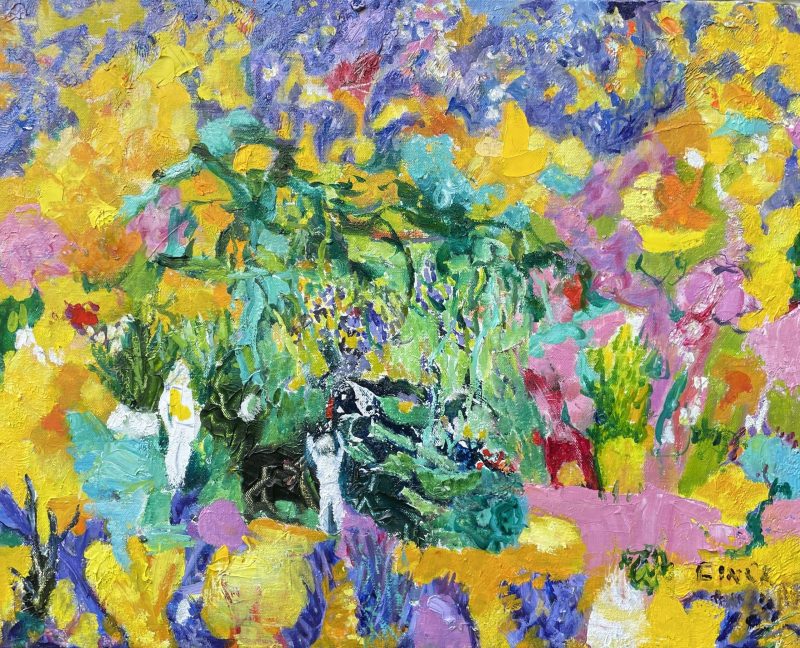 Are The Stars Out Tonight
Are The Stars Out Tonight
AUD$550
Size:
51w
x 41h
x 3.75d
cms
Maureen Finck
 Path To The Giant Rhododendrons
Path To The Giant Rhododendrons
AUD$1,100
Size:
102w
x 76h
x 3.75d
cms
Maureen Finck
 River Murray Landscape – Sort Of
River Murray Landscape – Sort Of
AUD$550
Size:
51w
x 41h
x 3.75d
cms
Maureen Finck
 Big Rock Among The Reeds
Big Rock Among The Reeds
AUD$930
Size:
76w
x 61h
x 3.75d
cms
Maureen Finck
 Rhododendrons
Rhododendrons
AUD$1,200
Size:
102w
x 76h
x 3.75d
cms
Maureen Finck
 Cliff Face With Trees
Cliff Face With Trees
AUD$1,200
Size:
102w
x 76h
x 3.75d
cms
Maureen Finck
 Rain Forest Walk
Rain Forest Walk
AUD$580
Size:
41w
x 51h
x 3.75d
cms
Maureen Finck
 The Flower
The Flower
AUD$560
Size:
51w
x 41h
x 3.76d
cms
Maureen Finck
 Swings And Roundabouts
Swings And Roundabouts
AUD$550
Size:
51w
x 61h
x 3.75d
cms
Maureen Finck
 Rosemary And Lavender
Rosemary And Lavender
AUD$1,200
Size:
102w
x 76h
x 3.75d
cms
Maureen Finck
 Gum Trees And Wattle By The Creek
Gum Trees And Wattle By The Creek
AUD$1,200
Size:
76w
x 102h
x 3.75d
cms
Maureen Finck
 Pansies
Pansies
AUD$1,100
Size:
91w
x 91h
x 3.75d
cms
Maureen Finck
 Eucalyptus And Wattle
Eucalyptus And Wattle
AUD$1,200
Size:
76w
x 102h
x 3.75d
cms
Maureen Finck
 Lavender Growing On The Verge
Lavender Growing On The Verge
AUD$1,100
Size:
91w
x 91h
x 3.75d
cms
Maureen Finck
 Dorrigo Waterfall
Dorrigo Waterfall
AUD$930
Size:
61w
x 76h
x 3.75d
cms
Maureen Finck
 Lavender, Camellia and Foxglove
Lavender, Camellia and Foxglove
AUD$1,400
Size:
76w
x 102h
x 3.75d
cms
Maureen Finck
 Garden With Wattle Tree and Flowers
Garden With Wattle Tree and Flowers
AUD$1,200
Size:
76w
x 102h
x 3.75d
cms
Maureen Finck
 Saltbush On Kangaroo Island
Saltbush On Kangaroo Island
AUD$620
Size:
61w
x 51h
x 3.75d
cms
Maureen Finck
 Gum Trees By The River
Gum Trees By The River
AUD$1,200
Size:
76w
x 102h
x 3.75d
cms
Maureen Finck
 Lavender And Other Flowers
Lavender And Other Flowers
AUD$1,200
Size:
76w
x 102h
x 3.75d
cms
Maureen Finck
 Gum Trees By The Creek
Gum Trees By The Creek
AUD$1,200
Size:
76w
x 102h
x 3.75d
cms
Maureen Finck
 Flowers Of Love
Flowers Of Love
AUD$1,200
Size:
91w
x 91h
x 3.75d
cms
Maureen Finck
 Flower Garden
Flower Garden
AUD$1,100
Size:
102w
x 76h
x 3.75d
cms
Maureen Finck
 Australian Autumn Landscape
Australian Autumn Landscape
AUD$1,100
Size:
76w
x 102h
x 3.75d
cms
Maureen Finck
 The Reader By The Window
The Reader By The Window
AUD$620
Size:
51w
x 61h
x 3.76d
cms
Maureen Finck
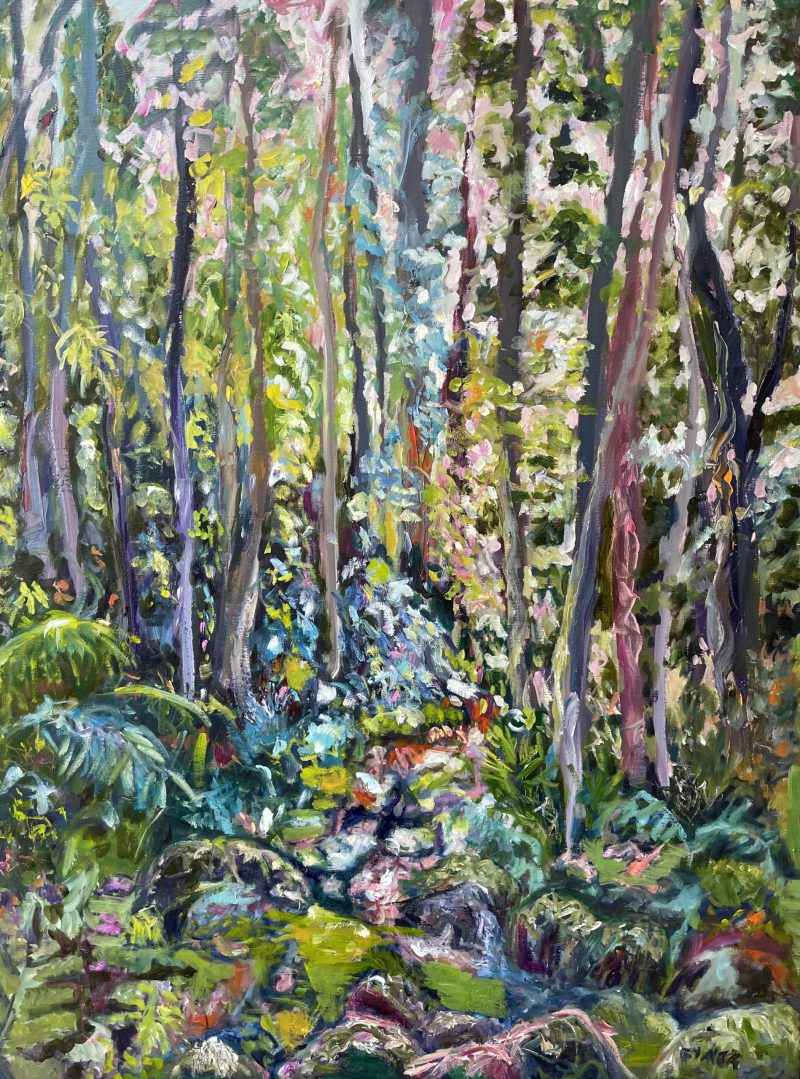 River Bed – Dorrigo National Park
River Bed – Dorrigo National Park
AUD$1,100
Size:
76w
x 102h
x 3.75d
cms
Maureen Finck
 Yellow Trees In The Landscape
Yellow Trees In The Landscape
AUD$830
Size:
76w
x 61h
x 3.75d
cms
Maureen Finck
 Flowers With Love
Flowers With Love
AUD$1,090
Size:
91w
x 91h
x 3.75d
cms
Maureen Finck
 Mountain Landscape
Mountain Landscape
AUD$830
Size:
61w
x 76h
x 3.75d
cms
Maureen Finck
 Think I’ll Sit This One Out
Think I’ll Sit This One Out
AUD$580
Size:
51w
x 41h
x 3.75d
cms
Maureen Finck
 Australian Mountain Range Landscape
Australian Mountain Range Landscape
AUD$1,200
Size:
102w
x 76h
x 3.75d
cms
Maureen Finck
 Carrick Hill Garden
Carrick Hill Garden
AUD$1,090
Size:
76w
x 102h
x 3.75d
cms
Maureen Finck
 The Artichoke
The Artichoke
AUD$780
Size:
76w
x 76h
x 3.75d
cms
Maureen Finck
 Mysterious Forest
Mysterious Forest
AUD$580
Size:
46w
x 61h
x 3.75d
cms
Maureen Finck
 Garden At Carrick Hill
Garden At Carrick Hill
AUD$1,060
Size:
76w
x 102h
x 3.75d
cms
Maureen Finck
 Agapanthas and Echinacea
Agapanthas and Echinacea
AUD$1,060
Size:
76w
x 102h
x 3.75d
cms
Maureen Finck
 Blossom On Edinburgh Street
Blossom On Edinburgh Street
AUD$880
Size:
61w
x 91h
x 3.75d
cms
Maureen Finck
 Walking in Nature
Walking in Nature
AUD$580
Size:
51w
x 61h
x 3.75d
cms
Maureen Finck
 Camellias In Spring
Camellias In Spring
AUD$1,060
Size:
76w
x 102h
x 3.75d
cms
Maureen Finck
 Morialta Falls Landscape 3
Morialta Falls Landscape 3
AUD$880
Size:
61w
x 91h
x 3.75d
cms
Maureen Finck
 Be Still My Beating Heart 2
Be Still My Beating Heart 2
AUD$980
Size:
76w
x 102h
x 3.75d
cms
Maureen Finck
 Creek in Morialta Falls
Creek in Morialta Falls
AUD$420
Size:
19w
x 27h
x 1d
cms
Maureen Finck
 Hillside in Morialta Falls
Hillside in Morialta Falls
AUD$410
Size:
19w
x 27h
x 1d
cms
Maureen Finck
 PARA WIRRA AFTER RAIN
PARA WIRRA AFTER RAIN
AUD$900
Size:
76w
x 102h
x 3.75d
cms
Maureen Finck
 Be Still My Beating Heart
Be Still My Beating Heart
AUD$980
Size:
91w
x 91h
x 3.75d
cms
Maureen Finck
 Quince Blossom
Quince Blossom
AUD$500
Size:
41w
x 31h
x 3.75d
cms
Maureen Finck
 Clouds Over The Ocean
Clouds Over The Ocean
AUD$560
Size:
36w
x 46h
x 3.75d
cms
Maureen Finck
 Morialta Falls
Morialta Falls
AUD$750
Size:
61w
x 76h
x 3.75d
cms
Maureen Finck
 Carpet Of Camellia Flowers
Carpet Of Camellia Flowers
AUD$750
Size:
61w
x 76h
x 3.75d
cms
Maureen Finck
 Garden Landscape – Stangate House
Garden Landscape – Stangate House
AUD$560
Size:
36w
x 46h
x 3.75d
cms
Maureen Finck
 Forest Walk
Forest Walk
AUD$580
Size:
36w
x 46h
x 3.75d
cms
Maureen Finck
 Spring Garden
Spring Garden
AUD$950
Size:
76w
x 102h
x 3.75d
cms
Maureen Finck
 Para Wirra Landscape
Para Wirra Landscape
AUD$950
Size:
76w
x 102h
x 3.75d
cms
Maureen Finck
 The Waterfall
The Waterfall
AUD$880
Size:
61w
x 91h
x 3.75d
cms
Maureen Finck
 Eucalyptus Forest
Eucalyptus Forest
AUD$950
Size:
76w
x 102h
x 3.75d
cms
Maureen Finck
 The Universe And Everything
The Universe And Everything
AUD$450
Size:
31w
x 26h
x 3.75d
cms
Maureen Finck
 Nature Walk
Nature Walk
AUD$620
Size:
36w
x 46h
x 3.75d
cms
Maureen Finck
 Mountain Landscape – Canada
Mountain Landscape – Canada
AUD$930
Size:
102w
x 76h
x 3.75d
cms
Maureen Finck
 Suburban Orange Tree
Suburban Orange Tree
AUD$400
Size:
31w
x 26h
x 3.75d
cms
Maureen Finck
 Cliff Face – Onkaparinga Gorge
Cliff Face – Onkaparinga Gorge
AUD$710
Size:
61w
x 61h
x 3.75d
cms
Maureen Finck
 Morialta Falls Landscape 2
Morialta Falls Landscape 2
AUD$880
Size:
61w
x 91h
x 3.75d
cms
Maureen Finck
 Morialta Falls Landscape
Morialta Falls Landscape
AUD$880
Size:
61w
x 92h
x 3.75d
cms
Maureen Finck
 Joe’s Mandarin Tree
Joe’s Mandarin Tree
AUD$930
Size:
91w
x 91h
x 3.75d
cms
Maureen Finck
 Onkaparinga Landscape
Onkaparinga Landscape
AUD$780
Size:
61w
x 76h
x 3.75d
cms
Maureen Finck
 Abstract Message
Abstract Message
AUD$700
Size:
61w
x 76h
x 3.75d
cms
Maureen Finck
 Landscape – Second Valley
Landscape – Second Valley
AUD$930
Size:
76w
x 102h
x 3.75d
cms
Maureen Finck
 Seascape – The Coorong
Seascape – The Coorong
AUD$780
Size:
61w
x 76h
x 3.75d
cms
Maureen Finck
 Seascape At Dusk
Seascape At Dusk
AUD$930
Size:
102w
x 76h
x 3.75d
cms
Maureen Finck
 Seascape – Port Broughton
Seascape – Port Broughton
AUD$930
Size:
102w
x 76h
x 3.75d
cms
Maureen Finck
 Hydrangea Garden Abstract
Hydrangea Garden Abstract
AUD$930
Size:
102w
x 76h
x 3.75d
cms
Maureen Finck
 WATTLE BRANCH
WATTLE BRANCH
AUD$780
Size:
61w
x 76h
x 3.75d
cms
Maureen Finck
 After The Fire – Kangaroo Island
After The Fire – Kangaroo Island
AUD$930
Size:
76w
x 102h
x 3.75d
cms
Maureen Finck
 Hydrangea Flowers 1
Hydrangea Flowers 1
AUD$930
Size:
101w
x 76h
cms
Maureen Finck
 Marcella’s Hydrangeas
Marcella’s Hydrangeas
AUD$930
Size:
101w
x 76h
x 3.75d
cms
Maureen Finck
 Abstract Hydrangeas
Abstract Hydrangeas
AUD$930
Size:
76w
x 101h
x 4.75d
cms
Maureen Finck
 Crystal Lake Landscape
Crystal Lake Landscape
AUD$480
Size:
51w
x 41h
x 3.75d
cms
Maureen Finck
 Forest Walk – Mylor Conservation Park
Forest Walk – Mylor Conservation Park
AUD$600
Size:
51w
x 61h
x 3.75d
cms
Maureen Finck
 Forest Walk – Adelaide Botanic Gardens
Forest Walk – Adelaide Botanic Gardens
AUD$600
Size:
51w
x 61h
x 3.75d
cms
Maureen Finck
 Over the hills and far away
Over the hills and far away
AUD$780
Size:
76w
x 61h
x 4.75d
cms
Maureen Finck
 Jacaranda Tree
Jacaranda Tree
AUD$930
Size:
101w
x 76h
x 3.75d
cms
Maureen Finck
 Neighbourhood Blossoms 1
Neighbourhood Blossoms 1
AUD$730
Size:
76w
x 61h
x 3.75d
cms
Maureen Finck
 Neighbourhood Blossoms
Neighbourhood Blossoms
AUD$490
Size:
61w
x 51h
x 3.75d
cms
Maureen Finck
 The Rio Grande Landscape
The Rio Grande Landscape
AUD$780
Size:
76w
x 61h
x 3.75d
cms
Maureen Finck
 New Mexico Landscape
New Mexico Landscape
AUD$930
Size:
101w
x 76h
x 3.75d
cms
Maureen Finck
 Brush Turkey – Kangaroo Island
Brush Turkey – Kangaroo Island
AUD$930
Size:
76w
x 101h
x 3.75d
cms
Maureen Finck
 Once We Were Berries
Once We Were Berries
AUD$830
Size:
91w
x 76h
x 3.75d
cms
Maureen Finck
 Birthday Flowers
Birthday Flowers
AUD$880
Size:
91w
x 76h
x 3.75d
cms
Maureen Finck
 Flinders Abstract
Flinders Abstract
AUD$610
Size:
61w
x 51h
x 3.75d
cms
Maureen Finck
 Field Of Tulips
Field Of Tulips
AUD$1,650
Size:
185w
x 122h
x 3.75d
cms
Maureen Finck
 Jasmine
Jasmine
AUD$780
Size:
76w
x 61h
x 3.75d
cms
Maureen Finck
 Wattle In The Park
Wattle In The Park
AUD$780
Size:
61w
x 76h
x 3.75d
cms
Maureen Finck
 Wattle Impression
Wattle Impression
AUD$880
Size:
91w
x 76h
x 3.75d
cms
Maureen Finck
 Wattle
Wattle
AUD$780
Size:
76w
x 76h
x 3.75d
cms
Maureen Finck
 Trees in the Park
Trees in the Park
AUD$980
Size:
76w
x 102h
x 3.75d
cms
Maureen Finck
 Landscape – Flinders Ranges
Landscape – Flinders Ranges
AUD$350
Size:
35w
x 28h
x 3.75d
cms
Maureen Finck
 Norton Summit Landscape
Norton Summit Landscape
AUD$980
Size:
76w
x 101h
x 3.75d
cms
Maureen Finck
 The Lake
The Lake
AUD$560
Size:
51w
x 51h
x 3.75d
cms
Maureen Finck
 Very, Very Abstract Seaweed
Very, Very Abstract Seaweed
AUD$780
Size:
76w
x 61h
x 3.75d
cms
Maureen Finck
 After TrimmingThe Lavender
After TrimmingThe Lavender
AUD$930
Size:
92w
x 76h
x 3.75d
cms
Maureen Finck
 Trees On Kangaroo Island
Trees On Kangaroo Island
AUD$1,030
Size:
76w
x 102h
x 3.75d
cms
Maureen Finck
 Lilies And Other Flowers
Lilies And Other Flowers
AUD$680
Size:
61w
x 76h
x 3.75d
cms
Maureen Finck
 Green Leaves and Red Berries
Green Leaves and Red Berries
AUD$930
Size:
92w
x 76h
x 3.75d
cms
Maureen Finck
 Abstract Seaweed 3
Abstract Seaweed 3
AUD$1,080
Size:
122w
x 91h
x 3.75d
cms
Maureen Finck
 Abstract Seaweed 2
Abstract Seaweed 2
AUD$1,080
Size:
122w
x 91h
x 3.75d
cms
Maureen Finck
 Abstract Seaweed
Abstract Seaweed
AUD$880
Size:
91w
x 76h
x 3.75d
cms
Maureen Finck
 Gum Leaves
Gum Leaves
AUD$930
Size:
76w
x 91h
x 1.75d
cms
Maureen Finck
 Lucie’s Tulips
Lucie’s Tulips
AUD$780
Size:
61w
x 76h
x 3.75d
cms
Maureen Finck
 Fertility Bouquet
Fertility Bouquet
AUD$930
Size:
101w
x 76h
x 4d
cms
Maureen Finck
 Berries
Berries
AUD$980
Size:
91w
x 91h
x 3.75d
cms
Maureen Finck
 Vimlan’s Garden
Vimlan’s Garden
AUD$340
Size:
36w
x 28h
x 3.75d
cms
Maureen Finck
 Eucalyptus Forest
Eucalyptus Forest
AUD$1,030
Size:
76w
x 121h
x 3.75d
cms
Maureen Finck
 Norton Summit Gum Trees
Norton Summit Gum Trees
AUD$930
Size:
76w
x 101h
x 3.75d
cms
Maureen Finck
 Purple And White Flowers
Purple And White Flowers
AUD$680
Size:
61w
x 76h
x 3.75d
cms
Maureen Finck
 Stocks
Stocks
AUD$880
Size:
91w
x 76h
cms
Maureen Finck
 All Kinds Of Flowers
All Kinds Of Flowers
AUD$880
Size:
91w
x 76h
x 3.75d
cms
Maureen Finck
 The Swing
The Swing
AUD$390
Size:
61w
x 46h
x 3.75d
cms
Maureen Finck
 Blue Still Life
Blue Still Life
AUD$490
Size:
61w
x 61h
x 3.75d
cms
Maureen Finck
 The Olive Tree
The Olive Tree
AUD$1,030
Size:
91w
x 121h
x 3.75d
cms
Maureen Finck
 Gum Trees, Norton Summit
Gum Trees, Norton Summit
AUD$1,090
Size:
91w
x 122h
cms
Maureen Finck
 Laundry Day In Kolkata, India
Laundry Day In Kolkata, India
AUD$440
Size:
61w
x 46h
cms
Maureen Finck
 Gum Trees South Parklands
Gum Trees South Parklands
AUD$980
Size:
122w
x 91h
x 3.75d
cms
Maureen Finck
 Melbourne – Inner City
Melbourne – Inner City
AUD$440
Size:
41w
x 51h
x 3.75d
cms
Maureen Finck
 Down The Port
Down The Port
AUD$630
Size:
61w
x 76h
x 3.75d
cms
Maureen Finck
 Nasturtiums
Nasturtiums
AUD$560
Size:
46w
x 51h
x 3.75d
cms
Maureen Finck
 Gum Trees – Norton Summit
Gum Trees – Norton Summit
AUD$1,090
Size:
91w
x 121h
x 3.75d
cms
Maureen Finck
 Sweet Peas
Sweet Peas
AUD$1,080
Size:
x 76h
x 3.75d
cms
Maureen Finck
 Valla Beach Driftwood 2
Valla Beach Driftwood 2
AUD$830
Size:
61w
x 76h
x 3.75d
cms
Maureen Finck
 Ghats On The River Ganges
Ghats On The River Ganges
AUD$860
Size:
76w
x 76h
x 7.75d
cms
Maureen Finck
 Valla Beach Driftwood
Valla Beach Driftwood
AUD$830
Size:
76w
x 61h
x 3.75d
cms
Maureen Finck
 Wisteria Arbor 1
Wisteria Arbor 1
AUD$830
Size:
61w
x 76h
x 3.75d
cms
Maureen Finck
 Wisteria Arbor 2
Wisteria Arbor 2
AUD$830
Size:
76w
x 61h
x 3.75d
cms
Maureen Finck
 Room With A View – Varanasi, India
Room With A View – Varanasi, India
AUD$610
Size:
61w
x 51h
x 3.75d
cms
Maureen Finck
 Flowers And Fruit
Flowers And Fruit
AUD$560
Size:
51w
x 61h
x 3.75d
cms
Maureen Finck
 Insect Tracks
Insect Tracks
AUD$680
Size:
76w
x 61h
x 3.75d
cms
Maureen Finck
 Olives, Zizyphus And Oranges
Olives, Zizyphus And Oranges
AUD$610
Size:
51w
x 61h
x 3.75d
cms
Maureen Finck
 Dorrigo National Park – Rain Forest
Dorrigo National Park – Rain Forest
AUD$830
Size:
61w
x 91h
x 3.75d
cms
Maureen Finck
 Finck Soup
Finck Soup
AUD$610
Size:
61w
x 51h
x 3.75d
cms
Maureen Finck
 Valla Beach Seashells
Valla Beach Seashells
AUD$830
Size:
61w
x 77h
x 3.75d
cms
Maureen Finck
 Australian Landscape
Australian Landscape
AUD$560
Size:
61w
x 61h
x 3.75d
cms
Maureen Finck
 Rain Forest, Dorrigo National Park
Rain Forest, Dorrigo National Park
AUD$830
Size:
76w
x 91h
x 3.75d
cms
Maureen Finck
 Eucalyptus Flowers
Eucalyptus Flowers
AUD$880
Size:
76w
x 61h
x 1.75d
cms
Maureen Finck
 Iris Flowers Revisited
Iris Flowers Revisited
AUD$660
Size:
61w
x 51h
x 3.75d
cms
Maureen Finck
 Deep Creek 1
Deep Creek 1
AUD$590
Size:
60w
x 50h
x 3.75d
cms
Maureen Finck
 The Hills Are Alive
The Hills Are Alive
AUD$930
Size:
101w
x 76h
x 3.75d
cms
Maureen Finck
 Second Valley Landscape
Second Valley Landscape
AUD$880
Size:
76w
x 91h
x 1.75d
cms
Maureen Finck
 Deep Creek Conservation Park
Deep Creek Conservation Park
AUD$880
Size:
91w
x 76h
x 3.75d
cms
Maureen Finck
 Flinders Landscape
Flinders Landscape
AUD$880
Size:
76w
x 91h
x 3.75d
cms
Maureen Finck
 ALMOND BLOSSOM, WILLUNGA
ALMOND BLOSSOM, WILLUNGA
AUD$930
Maureen Finck
 Deep Creek
Deep Creek
AUD$930
Size:
91w
x 76h
x 3.75d
cms
Maureen Finck
 Lotus Pond
Lotus Pond
AUD$640
Size:
76w
x 61h
x 8.75d
cms
Maureen Finck
 Mothers Day Flowers
Mothers Day Flowers
AUD$780
Size:
76w
x 76h
x 3.75d
cms
Maureen Finck
 Italia
Italia
AUD$780
Size:
76w
x 91h
x 0.75d
cms
Maureen Finck
 Flower Impression
Flower Impression
AUD$560
Size:
60w
x 60h
x 3.75d
cms
Maureen Finck
 If You Go Down To The Woods Today
If You Go Down To The Woods Today
AUD$500
Size:
76w
x 61h
x 3.75d
cms
Maureen Finck
 Hollyhocks
Hollyhocks
AUD$780
Size:
61w
x 91h
x 3.75d
cms
Maureen Finck
 Colours Of The Australian Bush
Colours Of The Australian Bush
AUD$630
Size:
61w
x 76h
x 3.75d
cms
Maureen Finck
 Moonlight Supper
Moonlight Supper
AUD$560
Size:
51w
x 76h
x 3.75d
cms
Maureen Finck
 WISTERIA AND ROSES
WISTERIA AND ROSES
AUD$780
Size:
91w
x 76h
x 3.75d
cms
Maureen Finck
 CONTEMPLATION
CONTEMPLATION
AUD$580
Size:
61w
x 76h
x 3.75d
cms
Maureen Finck
 BLOSSOM
BLOSSOM
AUD$660
Size:
60w
x 60h
x 3.75d
cms
Maureen Finck
 IRIS FLOWERS
IRIS FLOWERS
AUD$880
Size:
76w
x 101h
x 375d
cms
Maureen Finck
 THE FOREST FLOOR
THE FOREST FLOOR
AUD$740
Size:
101w
x 76h
x 3.75d
cms
Maureen Finck
 MID NORTH HILLS
MID NORTH HILLS
AUD$930
Size:
91w
x 76h
x 3.75d
cms
Maureen Finck
 BONDI BATHROOM
BONDI BATHROOM
AUD$290
Size:
35w
x 46h
x 3.75d
cms
Maureen Finck
 LOTUS FLOWER, ADELAIDE BOTANIC GARDENS
LOTUS FLOWER, ADELAIDE BOTANIC GARDENS
AUD$930
Size:
76w
x 91h
x 3.75d
cms
Maureen Finck
 TUSCANY LANDSCAPE
TUSCANY LANDSCAPE
AUD$780
Size:
76w
x 61h
x 3.75d
cms
Maureen Finck
 MOUNTAINS OF SANTA FE 2
MOUNTAINS OF SANTA FE 2
AUD$930
Size:
76w
x 91h
x 3.75d
cms
Maureen Finck
 MOUNTAINS OF SANTA FE
MOUNTAINS OF SANTA FE
AUD$930
Size:
91w
x 76h
x 3.75d
cms
Maureen Finck
 BOATS ON THE RIVER GANGES
BOATS ON THE RIVER GANGES
AUD$930
Size:
61w
x 96h
x 3.75d
cms
Maureen Finck
 LUNCH AT THE ADELAIDE CENTRAL MARKET
LUNCH AT THE ADELAIDE CENTRAL MARKET
AUD$550
Size:
61w
x 51h
x 3.75d
cms
Maureen Finck
 MID NORTH S A
MID NORTH S A
AUD$930
Size:
101w
x 76h
x 8.75d
cms
Maureen Finck
 HEYSON TRAIL, NORTON SUMMIT
HEYSON TRAIL, NORTON SUMMIT
AUD$930
Size:
76w
x 91h
x 3.75d
cms
Maureen Finck
 RED RIVER GUMS – EUCALPTUS CAMALDULENSIS
RED RIVER GUMS – EUCALPTUS CAMALDULENSIS
AUD$780
Size:
76w
x 91h
x 3.75d
cms
Maureen Finck
 VARANASI ON THE GANGES
VARANASI ON THE GANGES
AUD$930
Maureen Finck
 Varansi
Varansi
AUD$560
Size:
60w
x 50h
x 3.75d
cms
Maureen Finck
 YANKALILLA TO NORMANVILLE
YANKALILLA TO NORMANVILLE
AUD$880
Size:
76w
x 91h
x 3.75d
cms
Maureen Finck
 CREATURES OF THE DEEP
CREATURES OF THE DEEP
AUD$560
Size:
76w
x 51h
x 3.75d
cms
Maureen Finck
 OCTOPUS’S GARDEN
OCTOPUS’S GARDEN
AUD$610
Size:
51w
x 76h
x 3.75d
cms
Maureen Finck
 Flinders Ranges Gum Trees
Flinders Ranges Gum Trees
AUD$880
Size:
91w
x 76h
x 3.75d
cms
Maureen Finck
 NOW IT’S SOMETHING ELSE
NOW IT’S SOMETHING ELSE
AUD$440
Size:
61w
x 51h
x 3.75d
cms
Maureen Finck
 KERSBROOK GUM TREES
KERSBROOK GUM TREES
AUD$880
Size:
76w
x 91h
x 3.75d
cms
Maureen Finck
 INNES NATIONAL PARK, YORKE PENINSULA
INNES NATIONAL PARK, YORKE PENINSULA
AUD$700
Size:
76w
x 101h
x 3.75d
cms
Maureen Finck
 IMPERIAL BEACH, CALIFORNIA
IMPERIAL BEACH, CALIFORNIA
AUD$700
Size:
102w
x 76h
x 3.75d
cms
Maureen Finck
 HUMBUG SCRUB GARDEN
HUMBUG SCRUB GARDEN
AUD$700
Size:
76w
x 91h
x 3.75d
cms
Maureen Finck
 KYNETON, SOUTH AUSTRALIA
KYNETON, SOUTH AUSTRALIA
AUD$800
Size:
90w
x 76h
x 3.75d
cms
Maureen Finck
 AUSTRALIAN BILLABONG WITH FALLEN GUM TREE BRANCHES
AUSTRALIAN BILLABONG WITH FALLEN GUM TREE BRANCHES
AUD$800
Size:
91w
x 76h
x 3.75d
cms
Maureen Finck
 RED RIVER GUMS
RED RIVER GUMS
AUD$800
Size:
91w
x 76h
x 3.75d
cms
Maureen Finck
 SANTA FE MOUNTAINS
SANTA FE MOUNTAINS
AUD$800
Size:
76w
x 91h
x 3.75d
cms
Maureen Finck
 GUM TREES BY THE MURRUMBIDGEE RIVER
GUM TREES BY THE MURRUMBIDGEE RIVER
AUD$800
Size:
92w
x 76h
x 3.75d
cms
Maureen Finck
 SELLICKS BEACH, SOUTH AUSTRALIA
SELLICKS BEACH, SOUTH AUSTRALIA
AUD$800
Size:
76w
x 92h
x 3.75d
cms
Maureen Finck
 KANGAROO ISLAND
KANGAROO ISLAND
AUD$780
Size:
76w
x 101h
x 3.75d
cms
Maureen Finck
 RAPID BAY, SOUTH AUSTRALIA
RAPID BAY, SOUTH AUSTRALIA
AUD$880
Size:
76w
x 102h
x 3.75d
cms
Maureen Finck
 City Lights, Rainy Nights
City Lights, Rainy Nights
AUD$560
Size:
61w
x 51h
x 3.75d
cms
Maureen Finck
 SANTA FE MOUNTAINS, NEW MEXICO
SANTA FE MOUNTAINS, NEW MEXICO
AUD$680
Size:
61w
x 76h
x 3.75d
cms
Maureen Finck
 SANTA FE MOUNTAINS, NEW MEXICO 1
SANTA FE MOUNTAINS, NEW MEXICO 1
AUD$680
Size:
61w
x 76h
x 3.75d
cms
Maureen Finck
 LAGUNA BEACH, CALIFORNIA
LAGUNA BEACH, CALIFORNIA
AUD$830
Size:
101w
x 76h
x 3.75d
cms
Maureen Finck
 FANTASY LANDSCAPE
FANTASY LANDSCAPE
AUD$775
Size:
101w
x 76h
x 3.75d
cms
Maureen Finck
 LANDSCAPE – BURRA, SOUTH AUSTRALIA
LANDSCAPE – BURRA, SOUTH AUSTRALIA
AUD$695
Size:
61w
x 76h
x 3.75d
cms
Maureen Finck
 Hello Henry
Hello Henry
AUD$490
Size:
51w
x 61h
x 3.75d
cms
Maureen Finck
 Writing Her Story
Writing Her Story
AUD$605
Size:
51w
x 61h
x 3.75d
cms
Maureen Finck
 Fitzroy Hairdresser
Fitzroy Hairdresser
AUD$675
Size:
61w
x 76h
x 12.75d
cms
Maureen Finck
 Marcella and her Butterfly
Marcella and her Butterfly
AUD$675
Size:
91w
x 91h
x 3.75d
cms
Maureen Finck
 The Bus Arrived – No Time To Finish My Apple
The Bus Arrived – No Time To Finish My Apple
AUD$440
Size:
76w
x 50h
x 3.75d
cms
Maureen Finck
 The Washing Line
The Washing Line
AUD$440
Size:
75w
x 50h
x 3.75d
cms
Maureen Finck
 Abandoned Sydney Furniture
Abandoned Sydney Furniture
AUD$625
Size:
76w
x 91h
x 3.75d
cms
Maureen Finck
 Yes, We Are Still Open
Yes, We Are Still Open
AUD$400
Size:
76w
x 61h
x 3.75d
cms
Maureen Finck
 Very, Very Big Waterlilies
Very, Very Big Waterlilies
AUD$675
Size:
101w
x 76h
x 3.75d
cms
Maureen Finck
 South Coast Reef
South Coast Reef
AUD$230
Size:
61w
x 50h
x 3.75d
cms
Maureen Finck
 Blue Mountains Cliff Face
Blue Mountains Cliff Face
AUD$340
Size:
45w
x 45h
x 3.75d
cms
Maureen Finck
 Bird on White
Bird on White
AUD$450
Size:
76w
x 100h
x 3.75d
cms
Maureen Finck
 Falling Leaves
Falling Leaves
AUD$450
Size:
76w
x 100h
x 3.75d
cms
Maureen Finck
 THE PINE FOREST WHERE WE FIND MUSHROOMS
THE PINE FOREST WHERE WE FIND MUSHROOMS
AUD$675
Size:
76w
x 101h
x 0.75d
cms
Maureen Finck
 Meeting In The Middle
Meeting In The Middle
AUD$675
Size:
76w
x 101h
x 3.75d
cms
Maureen Finck
 Red Skies At Night Sheperd’s Delight
Red Skies At Night Sheperd’s Delight
AUD$675
Size:
76w
x 101h
x 3.75d
cms
Maureen Finck
 Mid North Landscape
Mid North Landscape
AUD$775
Size:
101w
x 76h
x 3.75d
cms
Maureen Finck
 Very Colourful Gum Trees
Very Colourful Gum Trees
AUD$675
Size:
76w
x 101h
x 3.75d
cms
Maureen Finck
 Peterborough Loves It’s Gum Trees
Peterborough Loves It’s Gum Trees
AUD$675
Size:
76w
x 101h
x 3.75d
cms
Maureen Finck
 Gum Trees of the Mid North
Gum Trees of the Mid North
AUD$675
Size:
76w
x 101h
x 3.75d
cms
Maureen Finck
 IT’S SPRINGTIME AND DON’T THE FLOWERS KNOW IT
IT’S SPRINGTIME AND DON’T THE FLOWERS KNOW IT
AUD$675
Size:
101w
x 76h
x 3.75d
cms
Maureen Finck
 They Really Love Their Gardens In Peterborough
They Really Love Their Gardens In Peterborough
AUD$675
Size:
101w
x 76h
x 3.75d
cms
Maureen Finck
 My Lavender and Seaside Daisies
My Lavender and Seaside Daisies
AUD$555
Size:
76w
x 50h
x 3.75d
cms
Maureen Finck
 Lavender Against the Side Wall
Lavender Against the Side Wall
AUD$555
Size:
76w
x 50h
x 3.75d
cms
Maureen Finck
 Holden Lilies No 1
Holden Lilies No 1
AUD$675
Size:
76w
x 101h
x 3.75d
cms
Maureen Finck
 It’s a Long Way to the Top
It’s a Long Way to the Top
AUD$675
Size:
76w
x 101h
x 4.75d
cms
Maureen Finck
 Port Elliot, South Australia
Port Elliot, South Australia
AUD$775
Size:
76w
x 101h
cms
Maureen Finck
 Holden Lilies No 2
Holden Lilies No 2
AUD$675
Size:
76w
x 101h
x 3.75d
cms
Maureen Finck
 Cliff Face Sellicks Beach
Cliff Face Sellicks Beach
AUD$675
Size:
76w
x 101h
x 3.75d
cms
Maureen Finck
 Sandboarding the Little Sahara
Sandboarding the Little Sahara
AUD$675
Size:
76w
x 101h
x 4.75d
cms
Maureen Finck
 Beachport Conservation Park, South Australia
Beachport Conservation Park, South Australia
AUD$775
Size:
76w
x 101h
x 3.75d
cms
Maureen Finck
 Ocean View – Merino Rocks
Ocean View – Merino Rocks
AUD$625
Size:
76w
x 76h
x 3.75d
cms
Maureen Finck